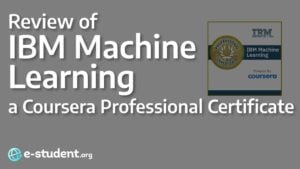Effective studying has been a persistent struggle for learners striving to excel academically. Numerous study methods and techniques have been developed over time by academics and educators to improve reading comprehension and information retention. The PQ4R method is one such approach that has become well-known.
Here, we will take a closer look at the PQ4R study method. We will first go over its history and how it differs from the SQ3R, a related study technique that is very similar. Then, we will look at its benefits and drawbacks, some research that has evaluated the effectiveness of PQ4R, and how it performs in various practical contexts. Finally, we will give you some pointers on how to use this method effectively in your study sessions.
Table of Contents
What is PQ4R?
The PQ4R study method was first introduced in the book “Improving Reading in Every Class,” which Ellen Lamar Thomas and H. Alan Robinson co-authored in the early 1970s. Both authors were well-known educators and researchers in the fields of education and reading comprehension.
PQ4R, which stands for Preview, Question, Read, Reflect, Recite, and Review, was developed in response to the drawbacks of conventional reading and study techniques. A more organized and systematic approach to learning was required at the time in order for learners and teachers to catch up with the development of complex academic materials, particularly textbooks, journal articles, and scholarly texts.
The PQ4R approach incorporates active reading and reflection in an effort to improve learners’ ability to comprehend, retain, and engage with academic materials. By methodically guiding learners through various steps, it helps them become more effective and efficient, which may ultimately lead to improved academic performance.

How is PQ4R different from SQ3R?
Although the terms PQ4R and SQ3R are sometimes used interchangeably in certain resources, there are a few important distinctions between them.
The PQ4R method can be seen as an improvement or refinement of the SQ3R method, effectively succeeding it by extending its existing framework. While maintaining key components of SQ3R, such as active engagement through questioning and summarizing the material, PQ4R introduces improvements, most notably the incorporation of a “Preview” step and the introduction of a “Reflect” step.
Here are the two main differences:
- The PQ4R method starts with a “Preview” step, akin to SQ3R’s “Survey” step, where learners quickly skim the material. This step helps create a mental framework for better comprehension.
- The PQ4R method has a step for reflection that is not present in the SQ3R method. Reflection helps learners read more deeply by encouraging them to think critically about the material as they read.
In a study from 2021, researchers found that PQ4R outperformed SQ3R in enhancing students’ reading comprehension. But the big question is, which one is truly superior? Well, that will, in many cases, depend on your overall learning style, and it is crucial to weigh how they operate, along with their strengths and weaknesses. You can explore the pros and cons of SQ3R here. Now, let us delve deeper into PQ4R.
A step-by-step guide to the PQ4R study method
The PQ4R method is composed of several related steps, each of which serves a particular function to advance the learning process.
Preview (P)
The first step in the PQ4R method is to preview the material you are about to study. This entails skimming the text for a few minutes while keeping an eye out for headings, subheadings, captions, and any emphasized or highlighted text. The goal of this step is to get a sense of the content and prepare your mind for what you are about to read. During this stage, you should avoid reading the entire text; instead, concentrate on the organization and key points.
Question (Q)
Once you have given the material a quick preview, the next step is to come up with some questions. These questions should be aimed at what you want to uncover from the text. Create queries that spark your interest and give you a definite purpose while you read. During your study session, questions serve as guideposts, keeping you on track and engaged. Your questions can revolve around definitions, crucial ideas, or anything you consider important.
When reading a historical text, for example, you can ask questions such as, “What events led to this historical period?” “Who were the key figures or leaders during this time?” and “How did societal changes impact the people of that era?” These questions, in essence, serve as a reading roadmap, directing your attention in the right direction.
Read (R)
Now that you have your questions, it is time to dive into the reading. Your aim is to find answers to the questions you have formulated. While you are at it, make sure to jot down notes or highlight important stuff like key points, definitions, and anything that seems relevant. These annotations will prove invaluable for consolidating your understanding and facilitating later review.
Reflect (R)
Take some breaks during your reading to do a bit of reflection. Think about how all the information you have gathered fits into the bigger picture of what you are reading and what you already know. It is like putting the pieces of the puzzle together to identify the main themes or ideas that begin to stand out. It can be quite enlightening to take this time for reflection.
Recite (R)
After you have finished reading a section or chapter, close the book or document and recite the answers to the questions you have formulated, as well as everything you have learned from your reading. This step is like a mental workout that strengthens your grasp of the material and helps you remember it better. It is also a way to assess how well you have absorbed the content, highlighting any areas that might need more study or review.
In this step, consider this handy tip: grab your smartphone or any device and record what you recite. It’s like creating your own audio notes, which can become a precious resource for future review. This way, you can revisit and reinforce what you’ve learned at your convenience.
Now, if you happen to be in a place where speaking out loud is not an option, like a library, you can still make the most of it by jotting down the answers to your questions or any important information from the text and mentally reciting them. Reciting them aloud is even more effective, though, as research indicates that it helps with memory retention.
Review (R)
Once you have completed your reading, it is time to enter the review phase. Here, your goal is to pull everything together. Summarize the main ideas, find connections between different parts, and distill the key takeaways from your reading. This final review step helps you solidify your understanding of the material as a whole and allows you to synthesize what you have learned.
As a concluding step, think about revisiting the material later on to reinforce your learning. One technique that works well in this step is spaced repetition, where you periodically revisit the material at specific intervals. This approach is especially effective for long-term retention. During this phase, make any necessary updates or additions to your notes, and make it a habit to review them from time to time to keep your knowledge fresh. Remember, the more you practice and stay consistent with this method, the better you will master it and reap its rewards in your studies.
The pros and cons of the PQ4R method
It is important to weigh the benefits and drawbacks of the PQ4R study method in light of your unique learning preferences and the characteristics of the material you are studying. Let us now explore more of them to help you make informed decisions about your study strategies.
Advantages of the PQ4R study method
- Better comprehension – One of the primary advantages of the PQ4R method is its scientifically proven ability to improve comprehension. By actively engaging with the material through previewing, questioning, and reflection, learners gain a deeper understanding of the subject matter.
- Active reading – PQ4R encourages active engagement with the material from beginning to end. In comparison to passive reading techniques, this helps learners stay focused and retain information better.
- Improved critical thinking – PQ4R encourages critical thinking by requiring learners to formulate questions and reflect on the material. This encourages analytical thinking and the capacity to link concepts.
- Long-term retention – The recite and review steps in PQ4R help learners remember information for a long time. By actively recalling and summarizing key points, you are more likely to remember the material for exams and beyond.
- Preparation for complex texts – PQ4R excels at handling challenging research articles, dense course materials, and difficult academic texts. It gives learners the resources they need to analyze and comprehend complex subject matter.
Disadvantages of the PQ4R study method
- Time-consuming – Some learners may find the PQ4R method time-consuming, particularly when dealing with large amounts of reading. The need to preview, question, and reflect adds extra steps and time to the study process.
- Not suitable for all texts – The PQ4R method may not be the best option for simpler texts or casual reading. Some steps may not be necessary to follow for shorter readings.
- Initial learning curve – Effective PQ4R implementation may take some practice and adaptation. The transition to this structured approach may be difficult at first.
- Active engagement is overemphasized – The constant requirement for active engagement in PQ4R may be difficult and mentally taxing for those who favor a more passive reading approach.
- Possibility of excessive highlighting – Some learners might rely too heavily on highlighting while reading, which could reduce the effectiveness of this method if used excessively.
The proven effectiveness of PQ4R
Several studies have explored the efficacy of the PQ4R study method, with a particular focus on reading comprehension. These studies consistently demonstrate the positive impact of PQ4R on students’ ability to understand and retain information from various academic texts. PQ4R has proven to be an effective tool in improving reading comprehension skills across different educational contexts.
Moreover, the benefits of PQ4R extend beyond reading comprehension alone. One notable study delved into the application of PQ4R in mathematics education, specifically targeting elementary students. This study revealed that PQ4R had a significant influence on the development of higher-order thinking skills, particularly in the context of fifth-grade mathematics education. It suggests that PQ4R can serve as a valuable asset in enhancing critical thinking and problem-solving abilities, even in math-related subjects.
In the midst of the COVID-19 pandemic, remote learning posed unprecedented challenges for students, particularly in reading English texts. A study during this period proposed the PQ4R method as a solution to address these challenges. It emphasized the importance of PQ4R as a structured approach to improving students’ homework and reading comprehension, especially when learning remotely. This underscores the adaptability and relevance of PQ4R in providing students with effective strategies for tackling academic challenges, regardless of the learning environment.

Applying the PQ4R study method in different settings
The PQ4R study method shows promise as a flexible tool that can be used even under unusual conditions like a pandemic to foster critical thinking and address academic challenges. Its effects are felt in a range of academic contexts and subjects, giving learners and teachers a practical means of improving learning outcomes.
While frequently used in educational settings, its effectiveness also applies in the professional and personal realms. Let us look at how the PQ4R method can be used in various contexts, from academic work to the demands of the workplace.
Academic settings
The academic community frequently employs PQ4R to assist students in working through a variety of materials, including textbooks, journal articles, and lecture notes. Teachers use it as a teaching tool to effectively impart reading comprehension.
Professional development
PQ4R has a part to play in professional development outside of the realm of academia. PQ4R is a tool that experts in a variety of fields can use to simplify complex market analyses, business publications, and industry reports, making it simpler to stay informed and make well-informed decisions based on data. Employees in corporate settings may find PQ4R useful when interacting with technical manuals, compliance documents, and training materials. This may improve their grasp of vital information and its practical application. PQ4R may also help with effective knowledge absorption and retention, which is helpful for professionals in fields where continuing professional development is essential, like healthcare, law, and technology.
Personal growth and lifelong learning
By providing people with a flexible tool for personal development and lifelong learning, the PQ4R method expands its usefulness beyond formal settings. Whether engaging with self-help literature to improve life principles, navigating the wealth of online courses, or embarking on personal research or hobbies, PQ4R enhances comprehension, retention, and practical application of knowledge. People are given the ability to draw valuable insights from a variety of sources, encouraging a commitment to lifelong learning and constant self-improvement.

Tips for success with PQ4R
As we wrap up our discussion on PQ4R, let me share some helpful pointers for effectively incorporating PQ4R into your study routine.
- Keep yourself organized: Keep your PQ4R notes in a separate notebook or online document. This will make it easier for you to remember your thoughts, questions, and main points.
- Practice patience: It might take some time and repetition before incorporating the PQ4R method into your study routine becomes second nature. Be kind to yourself as you master these abilities.
- Adapt as necessary: Recognize that not all materials may call for completing all of the PQ4R steps. Depending on your learning goals and how complex the text is, modify your strategy.
- Combine with other methods: Feel free to use the PQ4R method in conjunction with other study techniques that suit you. You can increase your effectiveness by personalizing your study strategy.
Make it a habit! By integrating the PQ4R method into your study routine or professional growth efforts, you can tap into its power to enhance your understanding, critical thinking skills, and ability to retain information over the long term. No matter if you are a student, a busy professional, or an individual committed to personal growth, PQ4R offers a structured approach to mastering subjects and staying informed in our dynamic world.



